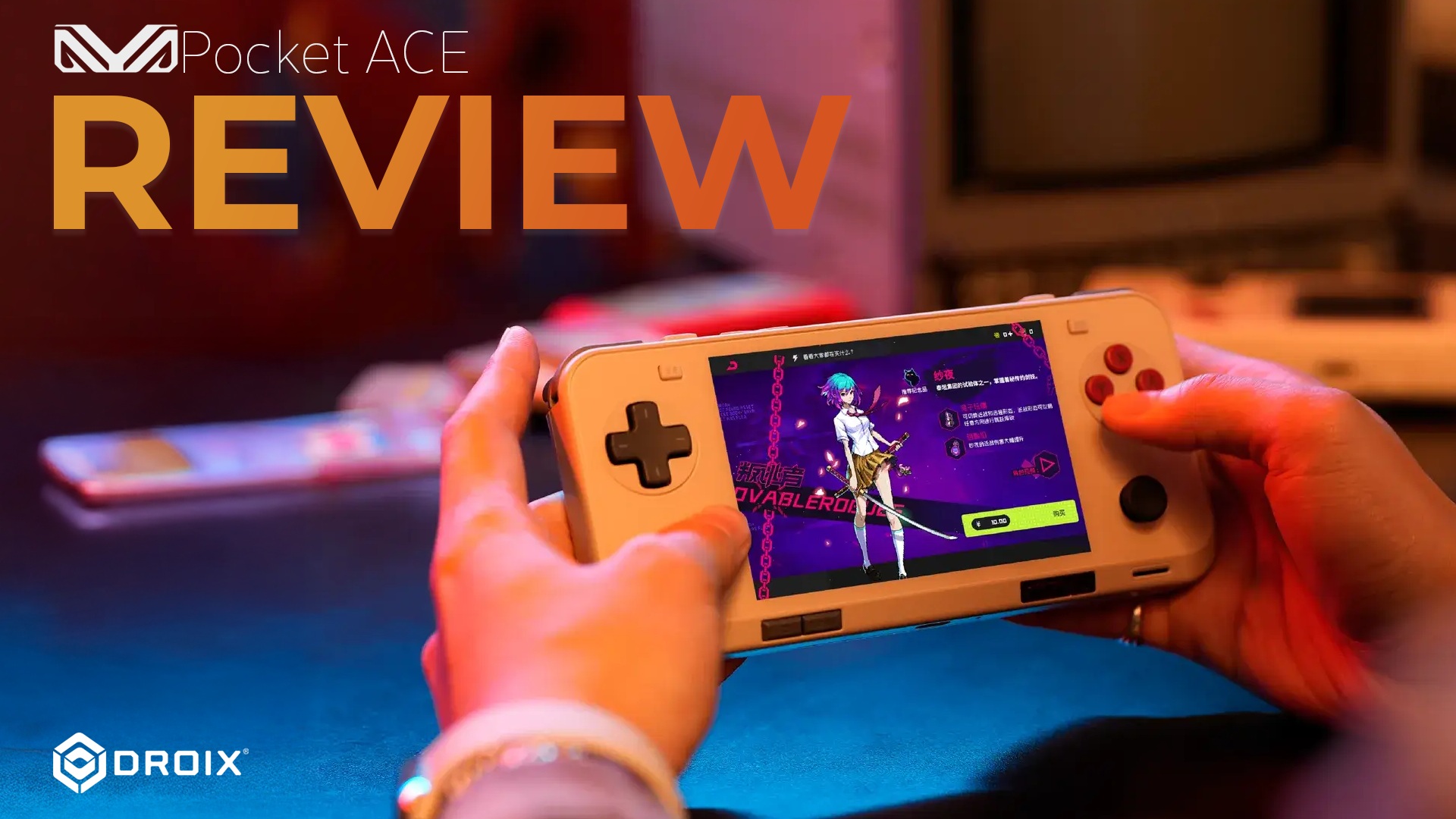AYANEO Pocket ACE Review
-
Design
-
Build Quality
-
Display
-
Performance
-
Features
-
Software
Summary
The AYANEO Pocket ACE is a top-tier, highly portable Android handheld, delivering robust performance for contemporary Android games and a smooth experience for retro emulation, thanks to its high-performance processor.
Pros
- Equipped with a powerful and efficient Snapdragon G3x Gen 2 Processor
- Boasts premium build quality and components
- Features a high-resolution 4.5-inch IPS touchscreen
- Designed for compactness and high portability
- Includes a comprehensive software suite and extensive customization options
Cons
- The 60Hz IPS display might not appeal to all users.
User Review
( votes)Are you constantly grappling with the choice between robust performance and convenient portability in a gaming device? Imagine a scenario where you don’t have to compromise. Today, we offer an in-depth exploration of the AYANEO Pocket ACE. This impressive device features the formidable Snapdragon G3x Gen 2 processor with a remarkably compact Android Gaming Handheld chassis. Join us as we thoroughly test its capabilities in our AYANEO Pocket ACE review to determine if this gaming Android handheld warrants your consideration.
AYANEO Pocket ACE Review Video
AYANEO Pocket ACE: A Closer Look
Let’s commence this AYANEO Pocket ACE review by examining the physical attributes of this Android handheld. The AYANEO Pocket ACE has dimensions of approximately 6.9 x 3.2 x 0.72 inches (17.6 x 8.25 x 1.84 cm) and a weight of about 310g (0.68 lbs).
Dominating the front is a 4.5-inch IPS touchscreen boasting a 1620×1080 resolution. AYANEO is known for its superior display quality, and this one is no exception, offering commendable brightness and vibrant colors that truly enhance the visual experience.
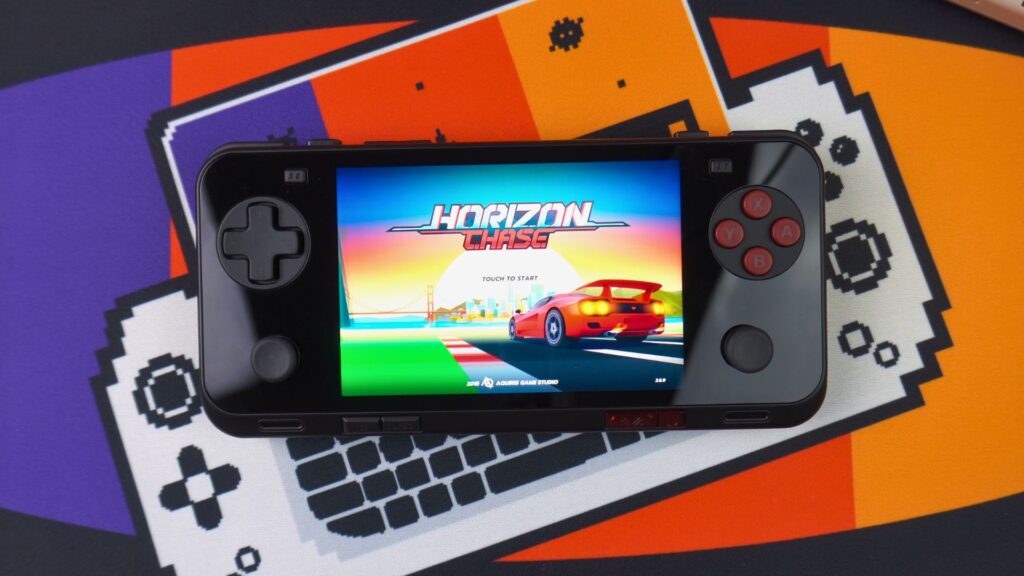
Flanking the screen are the D-Pad, dual hall effect analogue joysticks, and the customary gaming buttons. Along the lower edge, you’ll find two button pairs: one for Back and Performance Mode selection, and another set of transparent plastic buttons dedicated to the AYA Space overlay and returning Home. Curiously, the two buttons give the impression they should feature RGB illumination, but they do not.
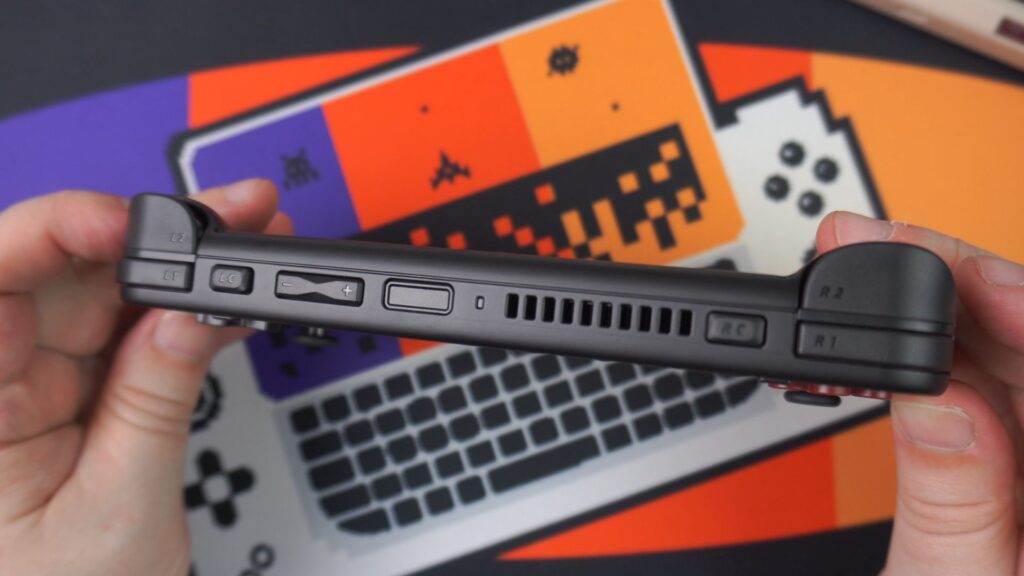
The right side houses a covered Micro SD card slot, allowing for storage expansion. The top edge features linear hall effect triggers accompanied by smaller shoulder buttons on each side. Adjacent to these are LC and RC buttons, customisable via the AYA Space software. Volume controls and a power button, which incorporates a fingerprint scanner for swift logins, are also located here.
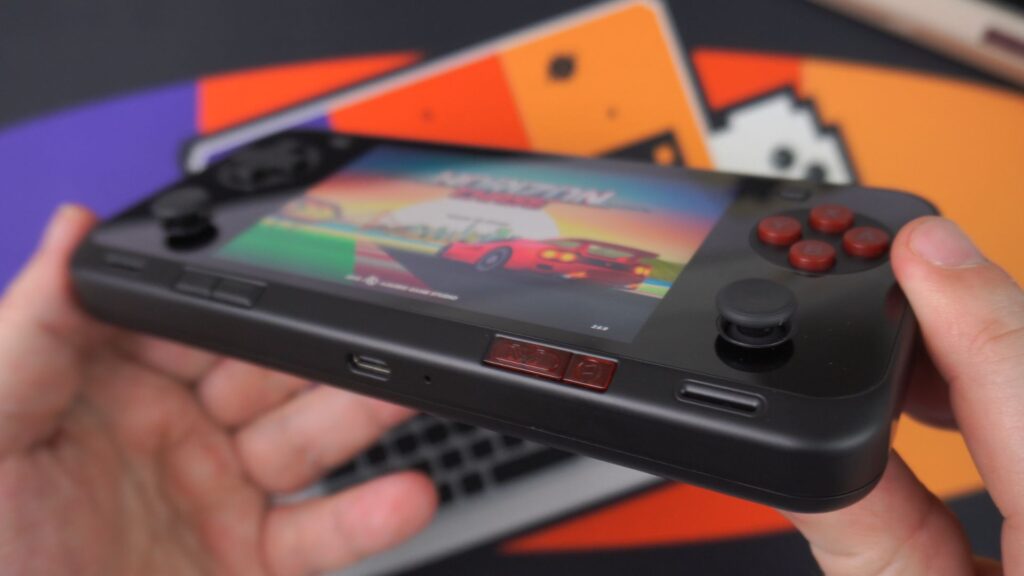
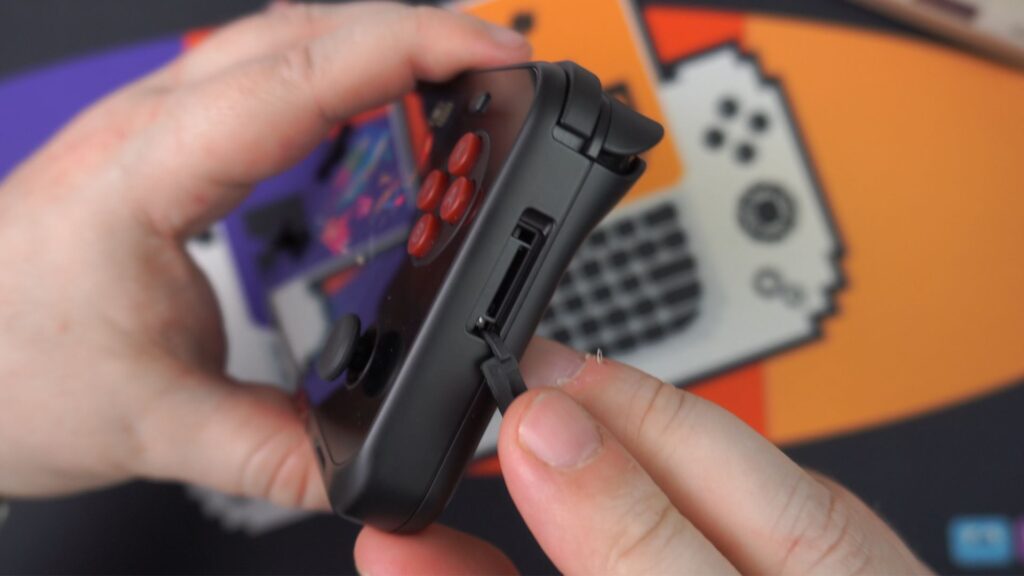
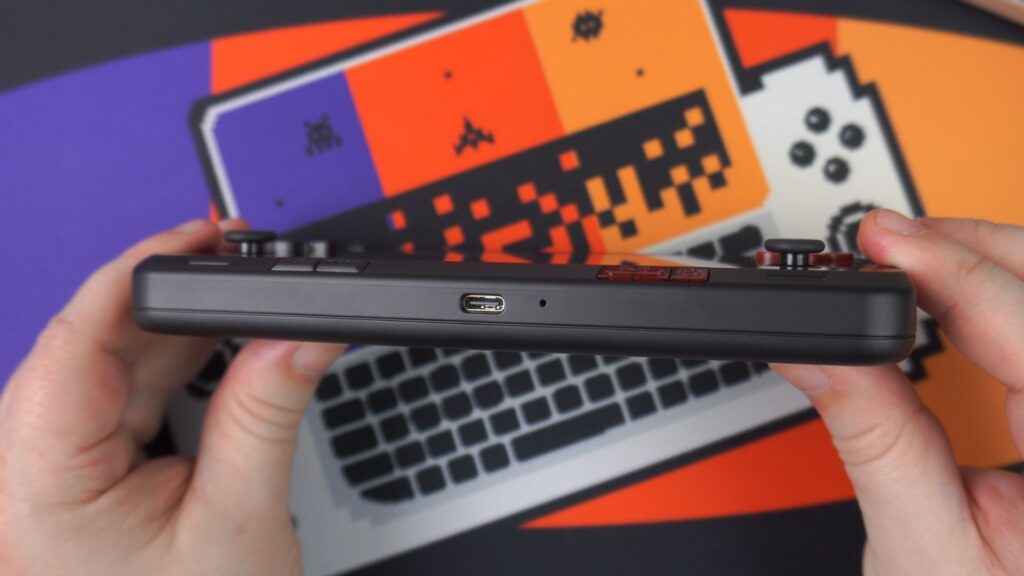
The bottom of the device is equipped with a USB 3.2 Gen 2 Type-C port, suitable for video output, connecting external storage solutions, and more.
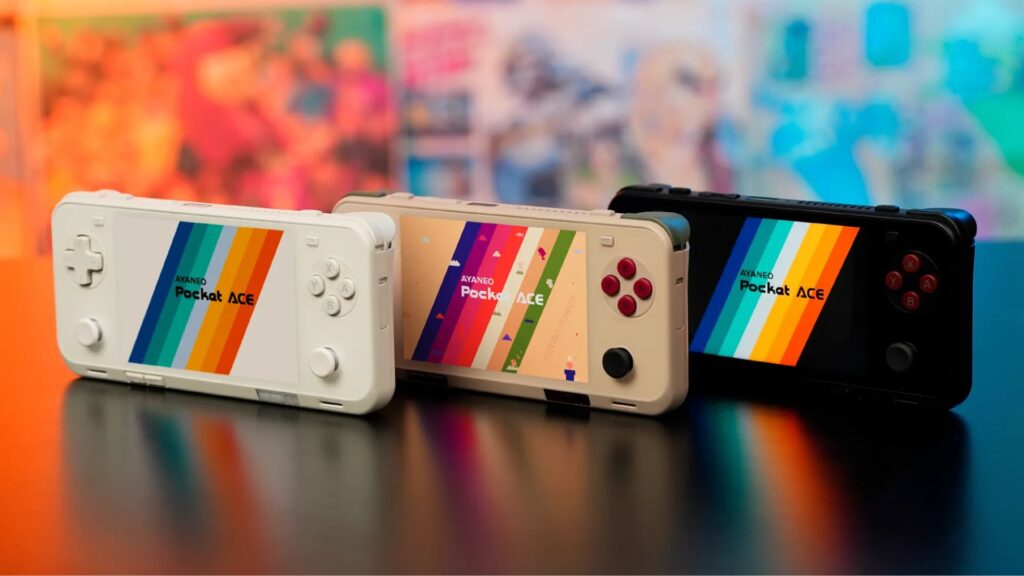
The unit under scrutiny is the Retro Power variant, though it’s also offered in ShadowDance Black and Light White color schemes. In terms of ergonomics and dimensions, it strikes an ideal balance – not as diminutive as the Pocket Micro nor as substantial as the AYANEO Pocket S or Evo. This results in a comfortable compromise, providing a generous display size while maintaining excellent portability, fitting easily into a jacket pocket, for instance.
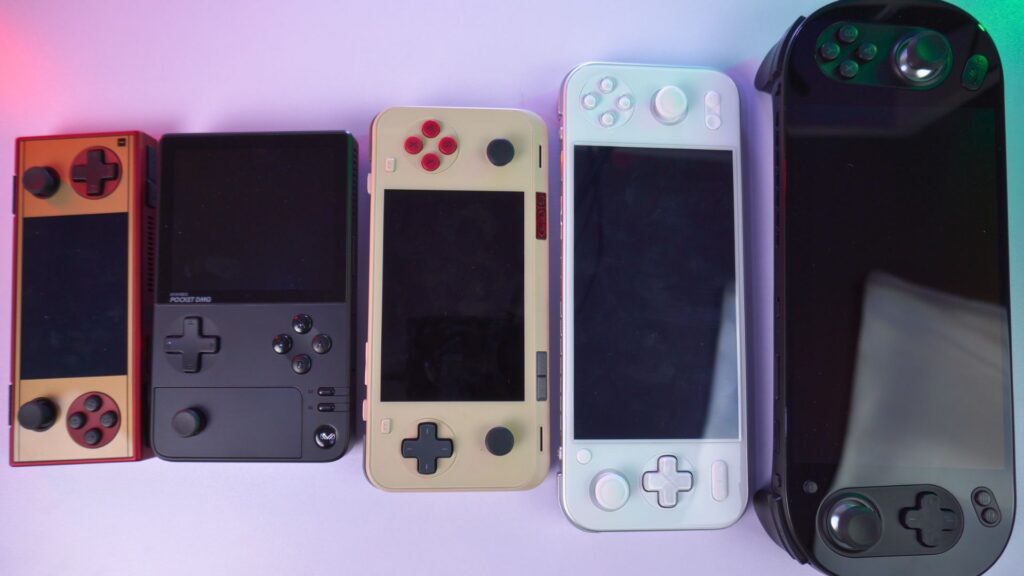
AYANEO Pocket ACE: Technical Specifications
Our AYANEO Pocket ACE review continues with an examination of its technical specifications, supplemented by our own assessments of battery longevity, fan acoustics, and thermal performance.
| DISPLAY | 4.5″ IPS Original Colour Borderless Full Screen, 1620 x 1080, 433PPI, 130% sRGB Colour Gamut, 400nits |
| CPU/GPU | Snapdragon G3x Gen 2 Gaming Platform, Up to 15W Qualcomm Adreno A32 |
| RAM/STORAGE | 8GB+128GB (LPDDR5X 8533Mbps/UFS 3.1) 12GB+256GB (LPDDR5X 8533Mbps/UFS 4.0) 16GB+512GB (LPDDR5X 8533Mbps/UFS 4.0) 16GB+1TB (LPDDR5X 8533Mbps/UFS 4.0) |
| I/O | 1 x Full Function USB 3.2 Gen 2 Type-C丨10Gbps 1 x Micro SD card slot丨100MB/s |
| BATTERY | 6000mAh, 40W PD charging |
| COLOURS | ShadowDance Black / Lightblade White / Retro Power |
| SIZE | 6.92 x 3.2 x 0.72 inches 17.6 x 8.25 x 1.84 cm |
| WEIGHT | 310g 0.68 lbs |
| OS | Android 13 |
The AYANEO Pocket ACE is powered by a 6,000mAh rechargeable battery, compatible with up to 40W PD fast charging. During our battery endurance tests, conducted under the performance profile at maximum brightness while running Antutu to stress the system fully, we recorded a battery life of 2 hours and 55 minutes. For typical usage scenarios, you can anticipate a duration in the 6-8 hour ballpark, potentially longer with more conservative power management settings.
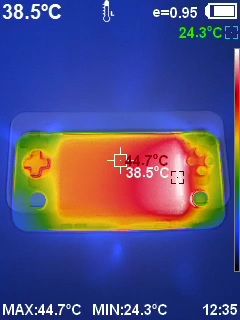
In our fan noise and temperature evaluations, also carried out during Antutu benchmarks, the lowest fan speed was barely perceptible. The average noise level registered at 48dB, peaking at 70dB with the fan at maximum velocity. However, the highest fan speed is unlikely to be necessary for most situations; the average setting should prove adequate. The device maintained a temperature of approximately 48 °C throughout these tests.
AYANEO POCKET ACE: OS & Software Insights
The AYANEO Pocket ACE operates on Android 13, a relatively current version widely adopted in Android handhelds. As a component of our AYANEO Pocket ACE review, we’ll explore the bundled software. The AYANEO Home screen is somewhat basic but proves to be entirely functional. Its responsiveness and ease of navigation leave no room for complaint.
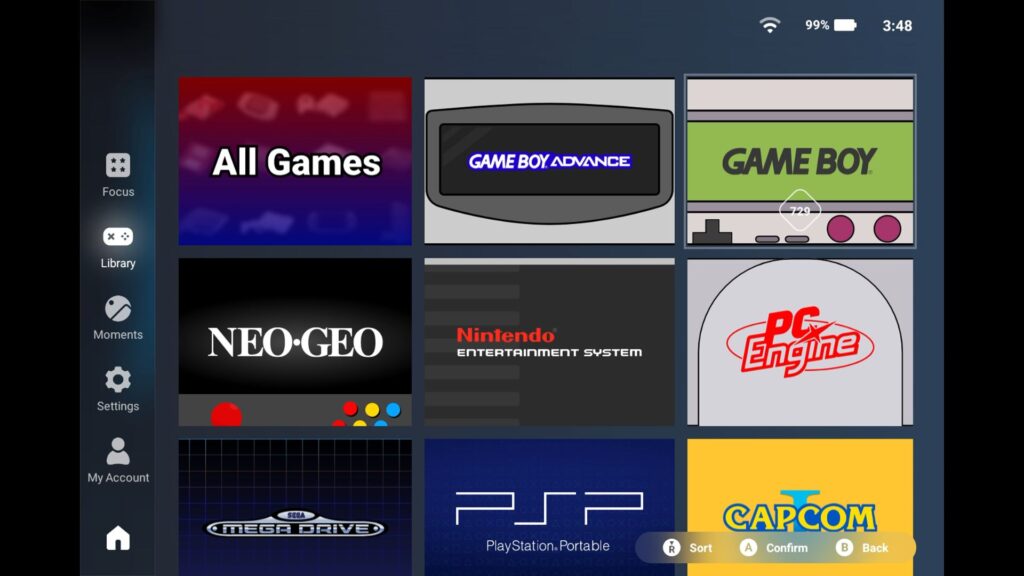
The AYA Space frontend serves as a hub for your game library. Manual setup is required, and for optimal presentation with box art and game details, utilising Pegasus or Emulation Station configuration files is advisable. Without these, only the game titles will be automatically displayed.
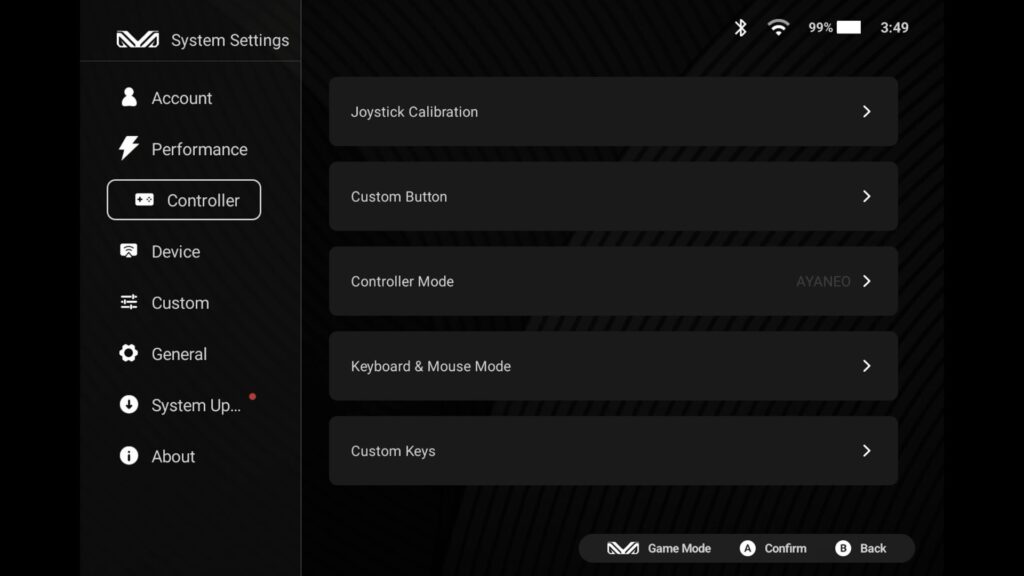
The AYA Settings application provides comprehensive control over the Android gaming console, encompassing performance adjustments, controller mapping, system preferences, and software updates. This thoughtful inclusion elevates the overall user experience, lending it a more premium quality.
System Benchmarks
Next in our AYANEO Pocket ACE review, we subject the Android gaming device to a series of system benchmarks to gauge its performance and to see how it stacks up against other models.
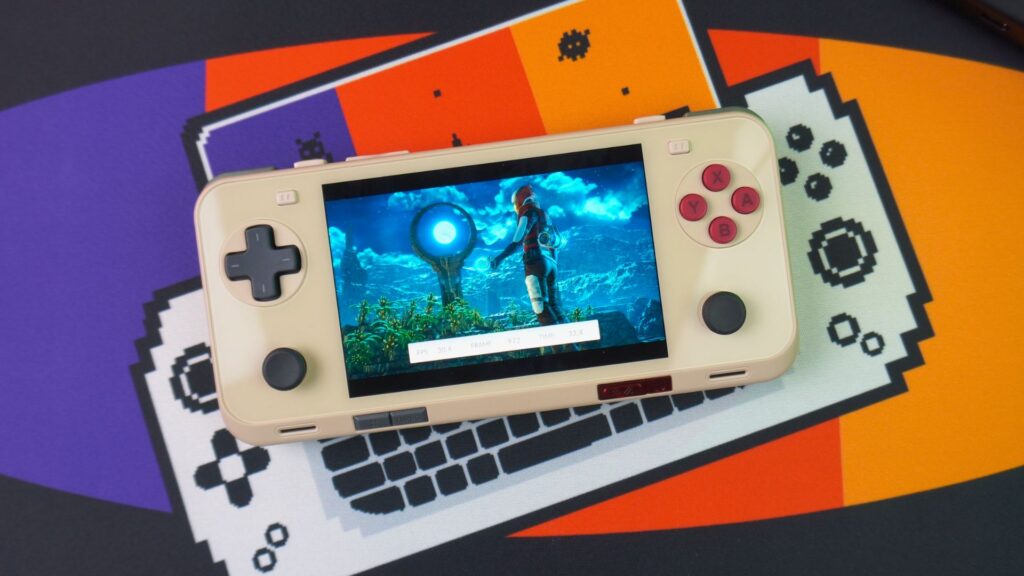
Geekbench 5
For legacy comparison purposes, testing with Geekbench 5 yielded scores in line with expectations for both single-core and multi-core CPU performance. The AYN Odin2 Portal secured the top position in these results, while the ACE vied for second and third place alongside the Pocket S.
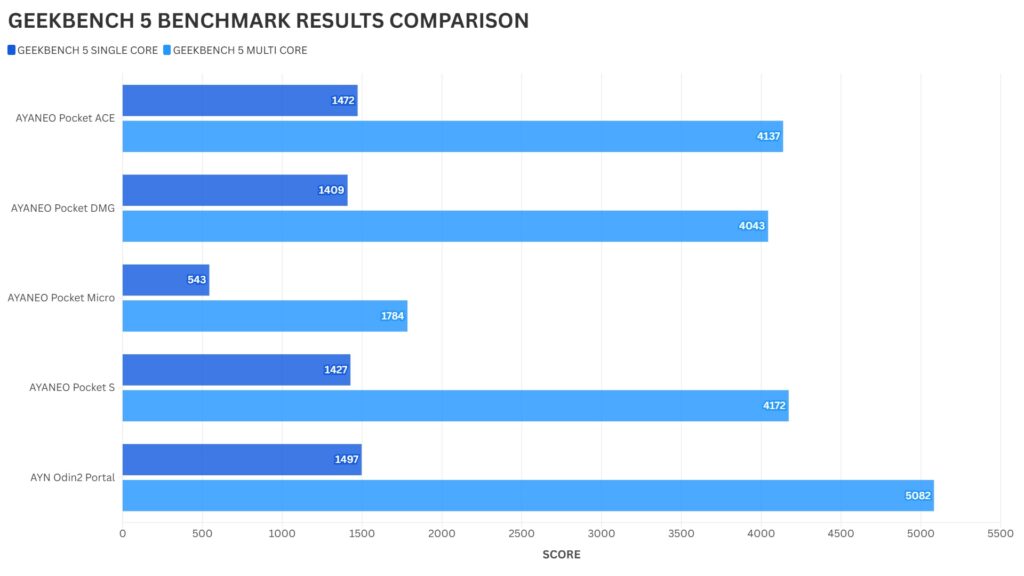
Geekbench 6
Utilising the more recent Geekbench 6, the device again achieved commendable scores. Single-core performance was comparable to the Pocket S, though a more significant disparity was observed in multi-core scores.

3DMark
In 3DMark, as anticipated, the device achieved maximum scores on the Sling Shot benchmark. On the Wildlife Extreme benchmark, it attained an impressive score of 4,227, securing the leading position in our results, which is a positive outcome. It’s also in this test where the Portal’s ranking faltered due to its less capable GPU.

Antutu
Antutu conducts a suite of tests evaluating various Android functionalities. The AYANEO Pocket ACE performed exceptionally well, achieving the highest scores recorded in our benchmarks, marginally edging out the AYANEO Pocket S.
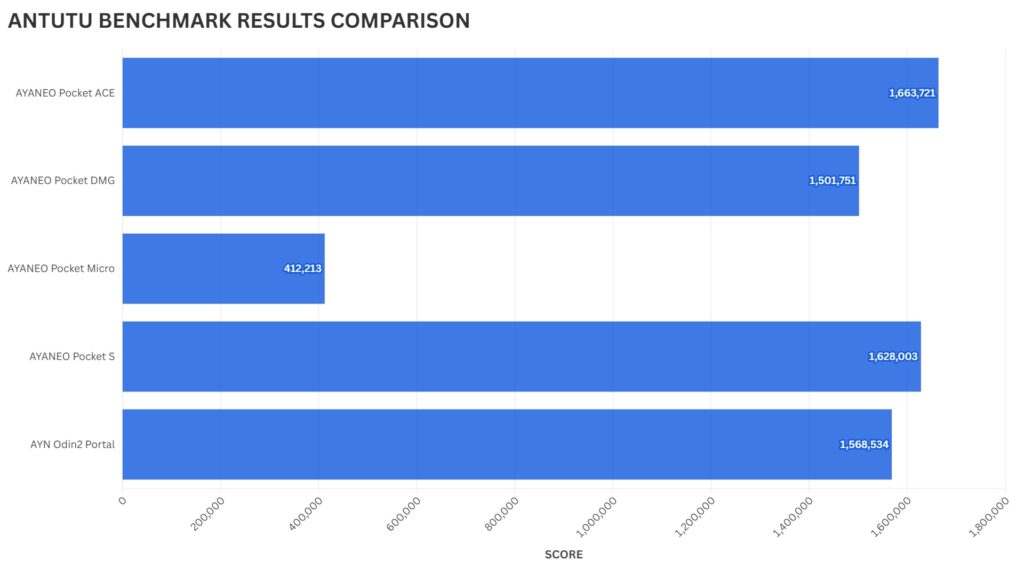
Benchmark Overview
In summary, the AYANEO Pocket ACE demonstrates very strong performance in the benchmarks. It secured several first-place rankings and achieved second or third positions, which is somewhat expected given that two other gaming Android handhelds feature the same processor. Its performance is certainly competitive with other leading handhelds.
Gaming Prowess
We continue this AYANEO Pocket ACE review with a brief assessment of its performance across our standard selection of Android games. These titles span a range from less demanding to highly intensive, and the device handled them all without any performance hitches.
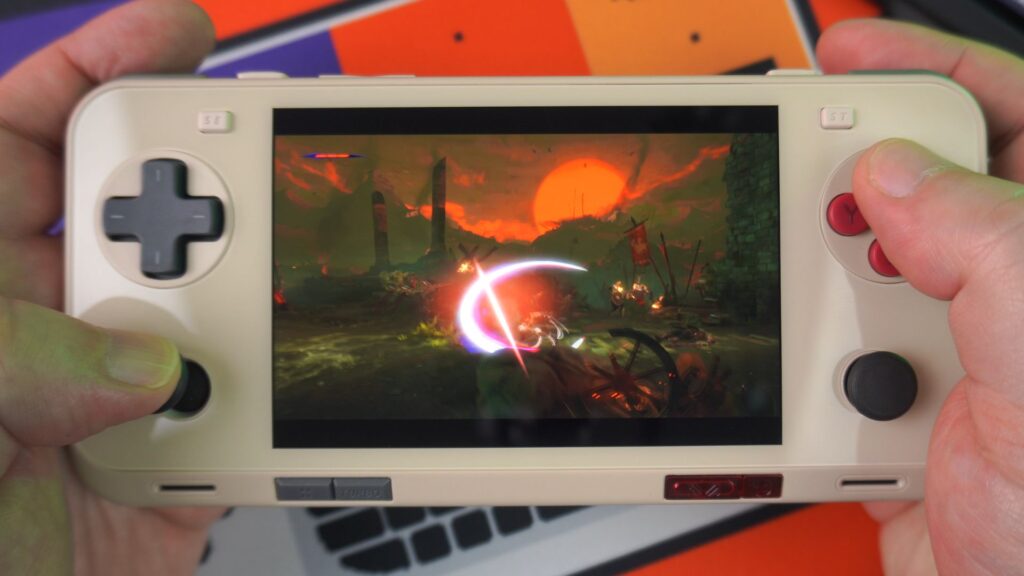
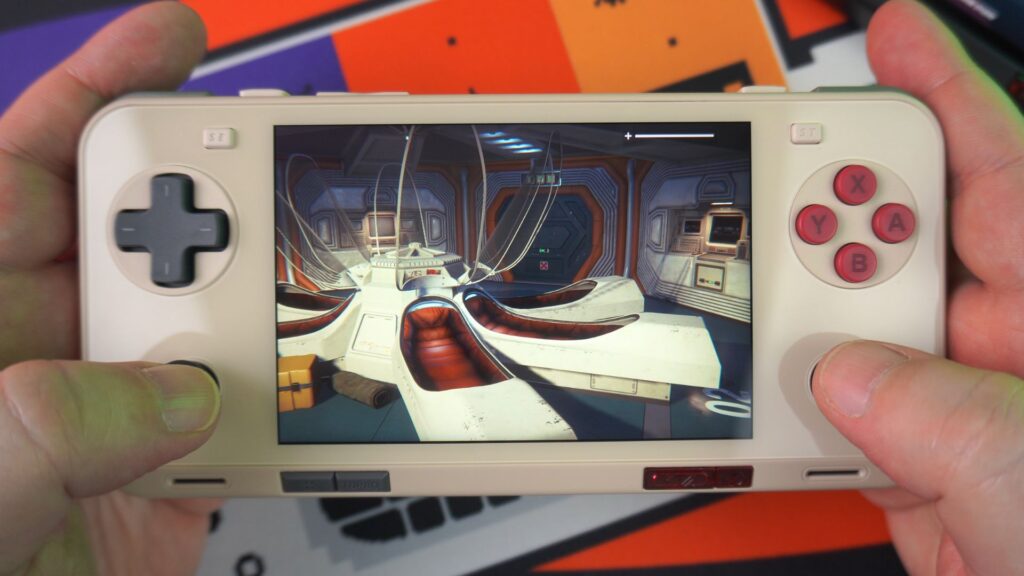
The CPU is exceptionally capable, ensuring smooth gameplay for the vast majority of Android games. Furthermore, the software incorporates a feature to spoof the device type, which can enable compatibility with games restricted to specific phone models (like the Xiaomi 14 Pro) to unlock higher frame rates.
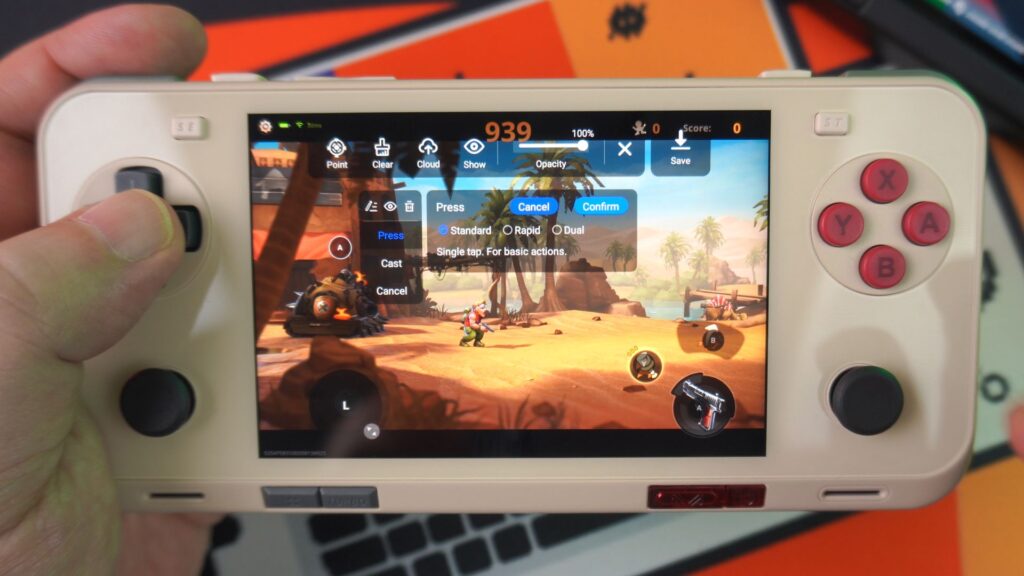
For games lacking native controller support, the built-in screen mapping functionality is available and works admirably. This feature allows you to map game controls to on-screen inputs, making a broad array of games playable with the physical controls.
Emulator Capabilities
Naturally, we couldn’t omit testing emulator performance in our AYANEO Pocket ACE review. As observed during our reviews of the AYANEO Pocket S and AYANEO Pocket DMG, the CPU is highly adept at emulation. You can expect to run virtually every emulator up to the PlayStation 2 era without encountering performance issues. Let’s briefly examine a few emulators in action on the AYANEO Pocket ACE.
AETHERSX2
With the now-discontinued AetherSX2, running compatible games should be trouble-free. Depending on the game’s demands, you have the flexibility to increase rendering resolution and apply various graphical enhancements to improve visual fidelity.
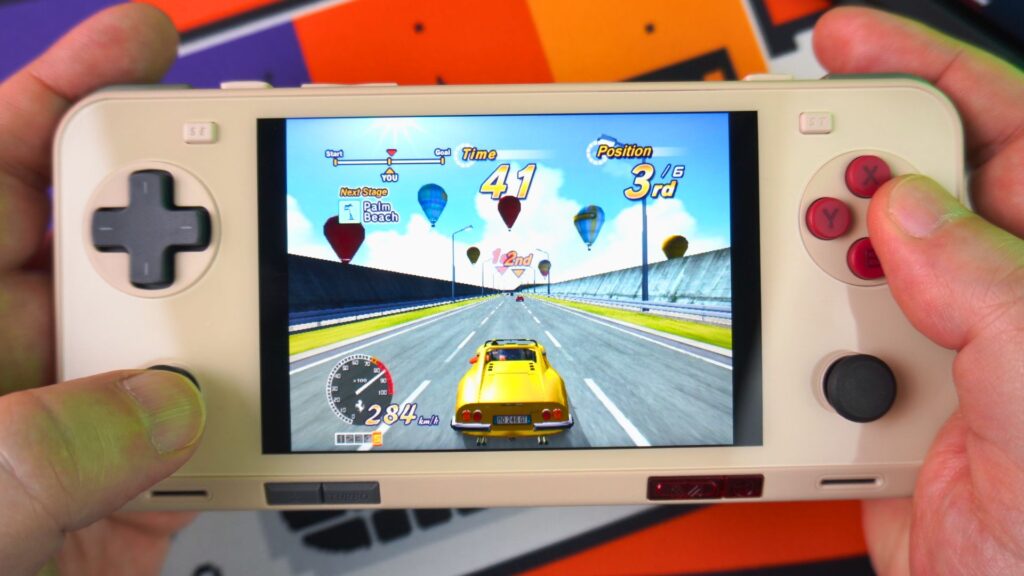
CITRA
On the Citra emulator, overall performance is very good. Again, contingent on the specific game, visual enhancements through upscaling are possible. You might encounter some initial shader cache lag in a few more demanding titles, but not to an extent that significantly detracts from the gameplay experience.
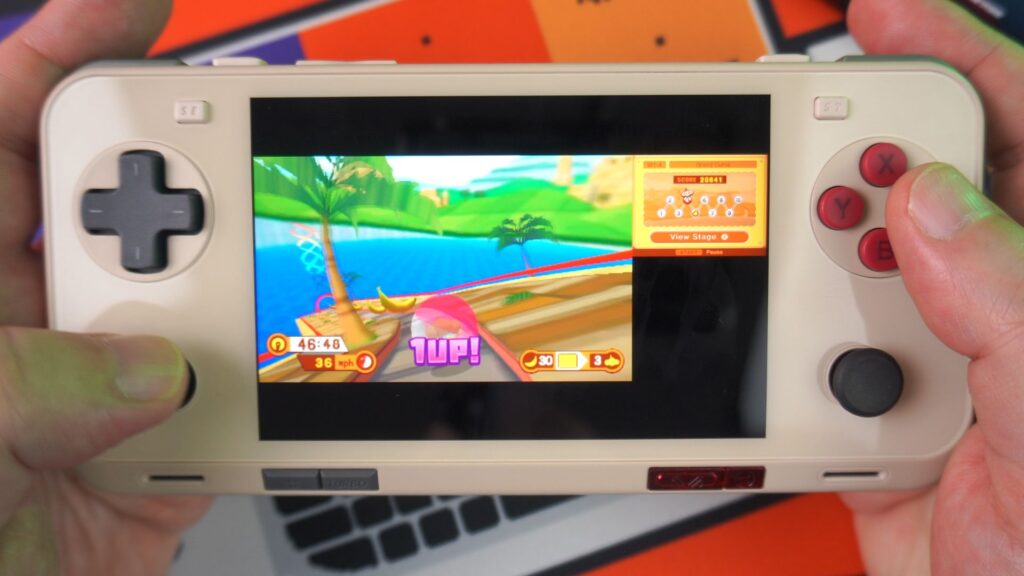
VITA3K
The Vita emulator, Vita3K, performs exceptionally well on the Pocket ACE. For games with low to medium demand, you can boost the rendering resolution for quite striking visual results. The emulator is continuously being refined, and we can anticipate even swifter performance in the future.
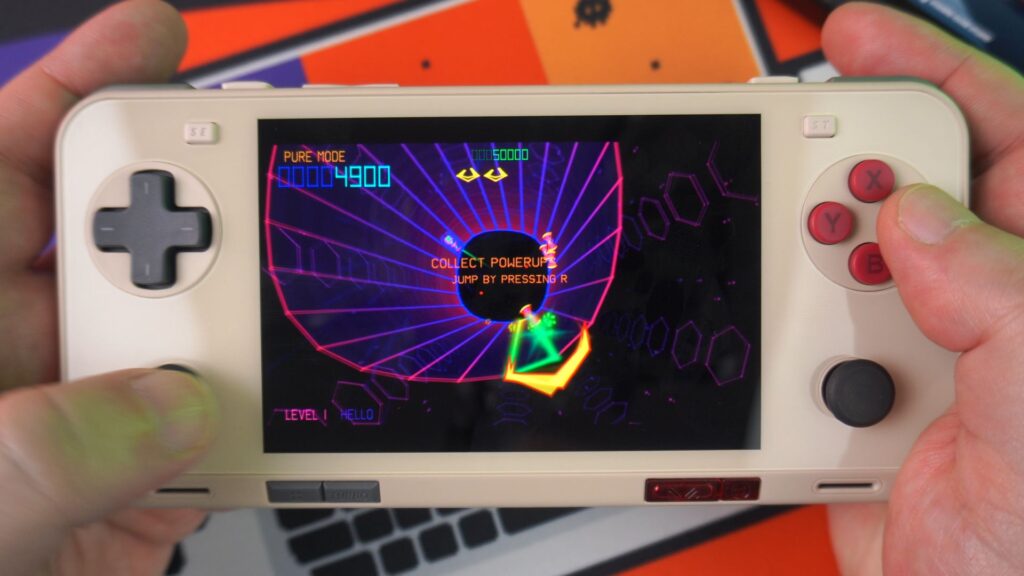
YUZU
With the Yuzu emulator (also now discontinued but there are forked versions available), performance is somewhat variable. Less demanding titles and third-party games are generally playable with good outcomes. Performance improvements can sometimes be realised by using the Turnip graphics drivers and by reducing the rendering resolution to achieve playable speeds in first-party games.

Concluding Thoughts
It’s time to consolidate our impressions for this AYANEO Pocket ACE review. The AYANEO Pocket ACE occupies a central position within AYANEO’s family of Android-based handhelds. It sits between the smaller AYANEO Pocket Micro models, which feature less powerful CPUs, and the larger Pocket S and AYANEO Pocket Evo, all of which boast the impressive Snapdragon G3x Gen 2 processor.
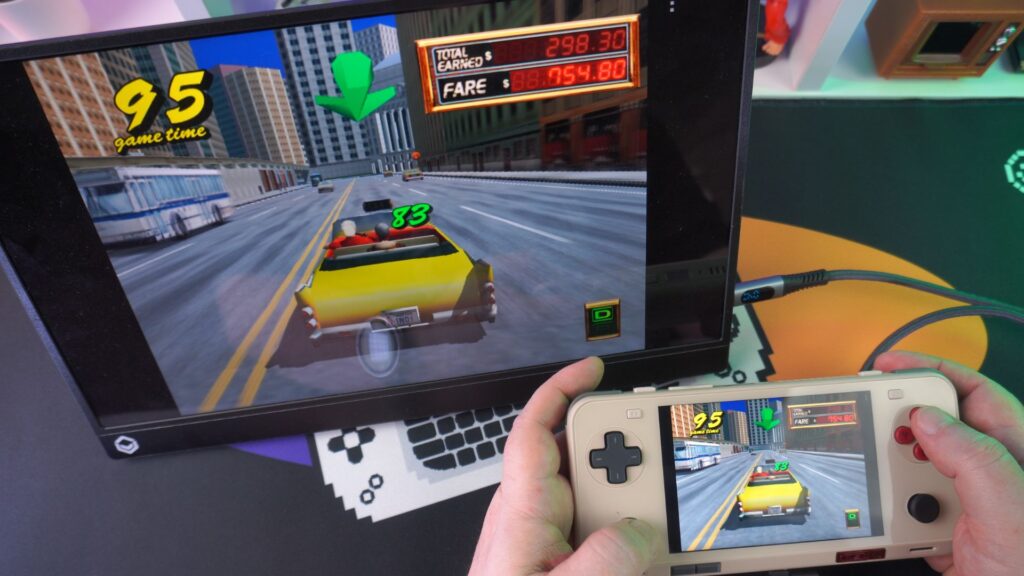
This device achieves an admirable equilibrium between portability and display size, all while maintaining high-end performance. And the Pocket ACE certainly delivers on performance, topping some benchmark charts and ranking second or third against other similarly specified Android gaming consoles. We encountered no problems with overheating or excessive fan noise.
While the battery life was slightly less than that of the Pocket DMG, it wasn’t a significant concern. However, the AYANEO Pocket ACE does involve certain trade-offs, such as an IPS display operating at 60Hz, as opposed to the OLED panels or higher refresh rates found on some competing models. For some users, this aspect is crucial and might be the determining factor when selecting an Android gaming device.
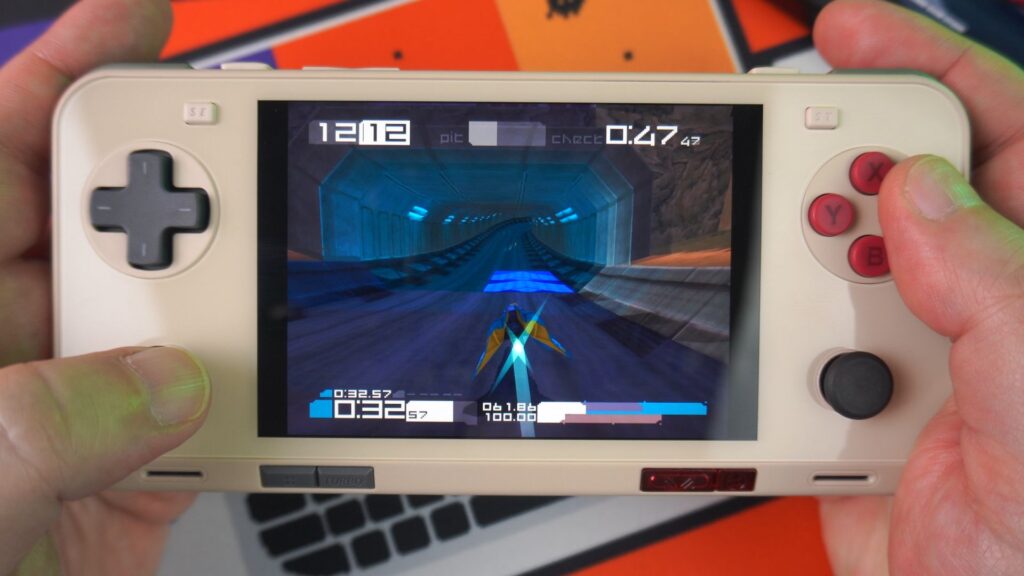

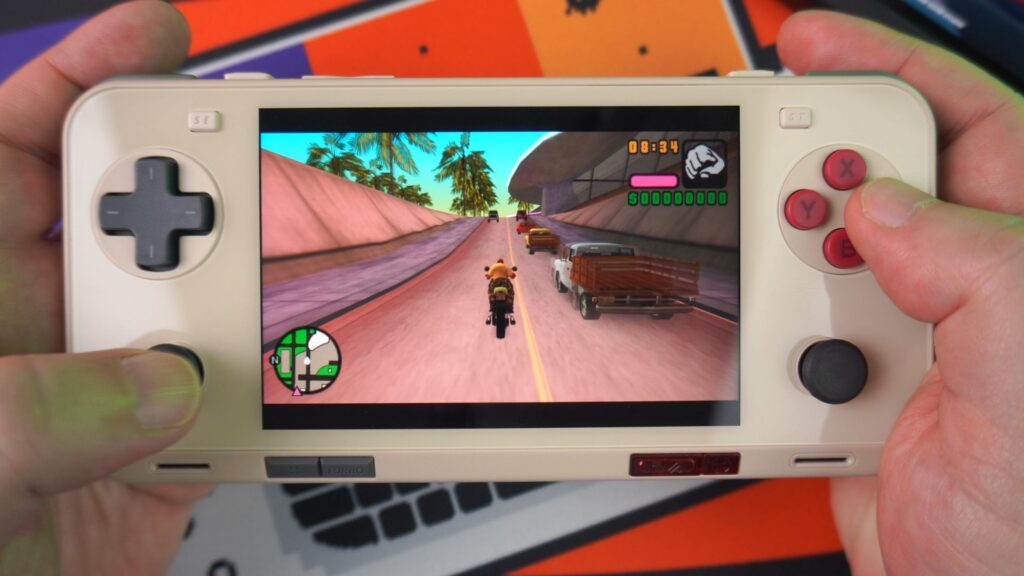
If your priority is a high-performance, extremely portable Android handheld, the AYANEO Pocket ACE stands out as an excellent option! You can find more details and buy the AYANEO Pocket ACE here.
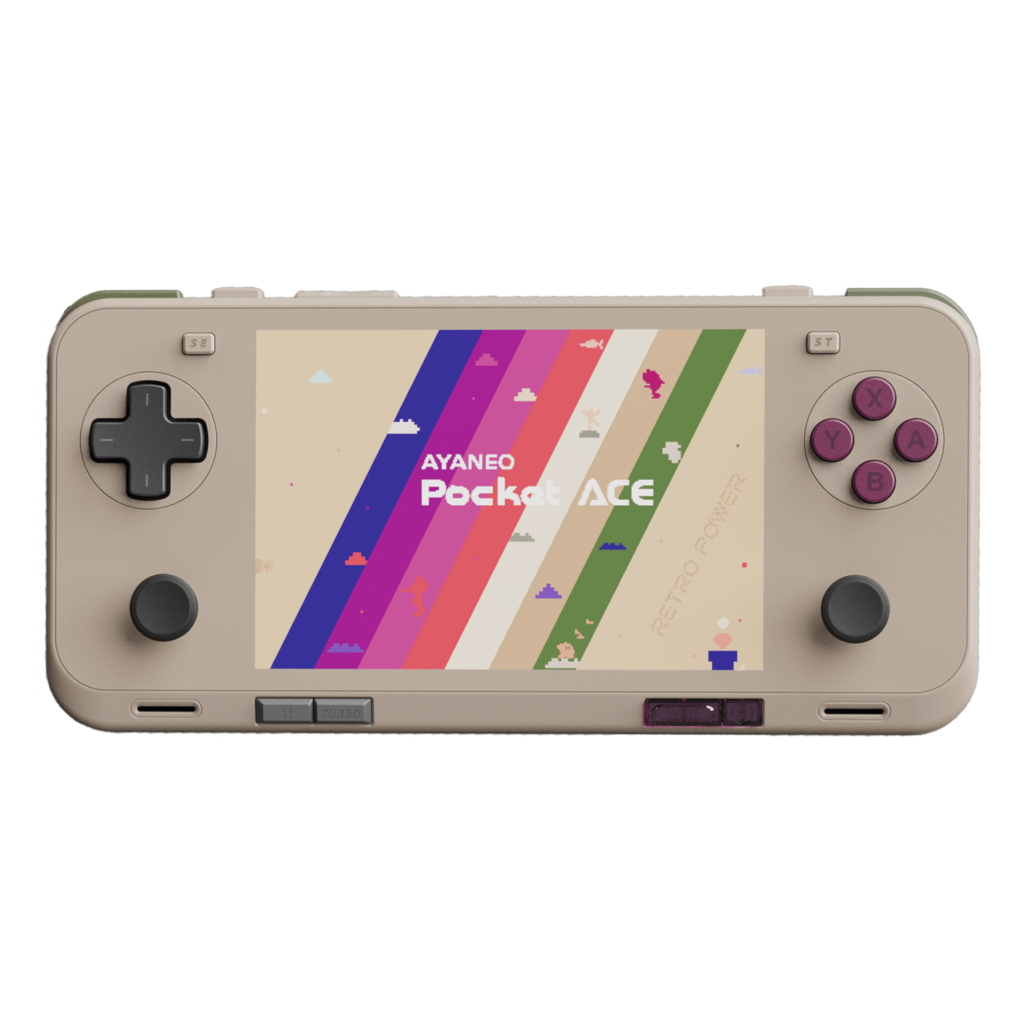
AYANEO Pocket ACE
That concludes our AYANEO Pocket ACE review. What are your opinions on this Android handheld? Do you see it as a successful fusion of power and portability? Share your thoughts in the comments section below.

